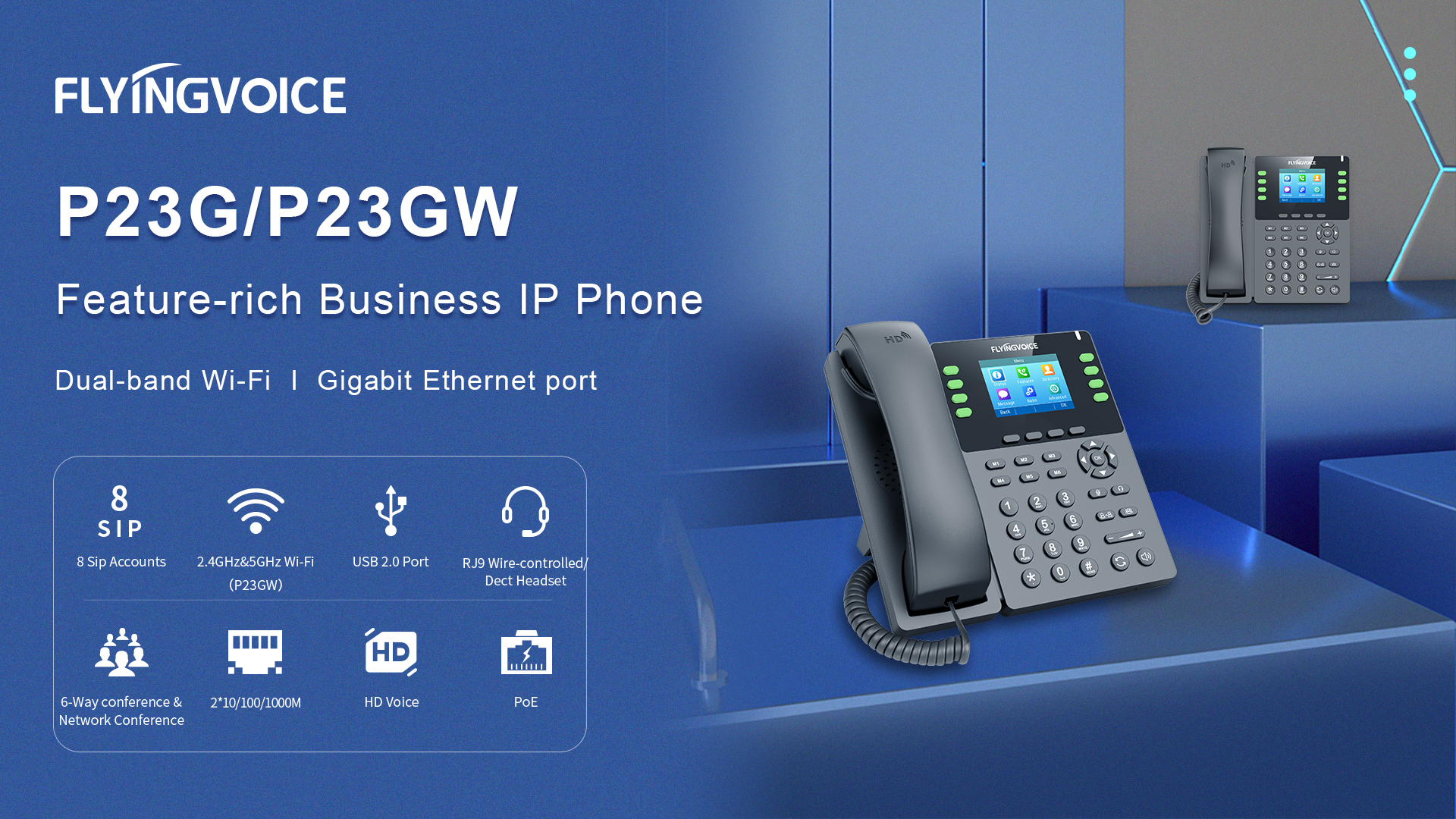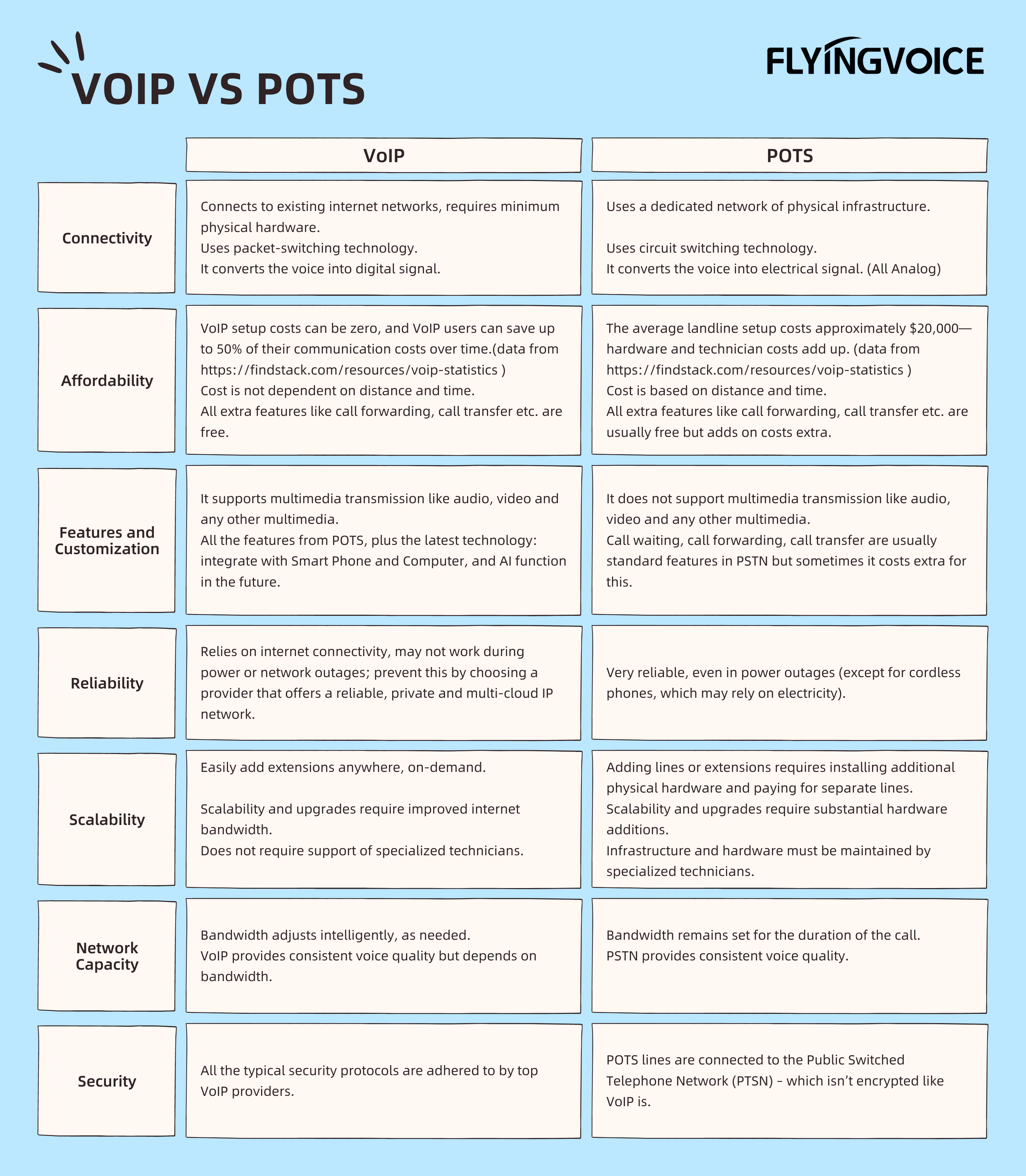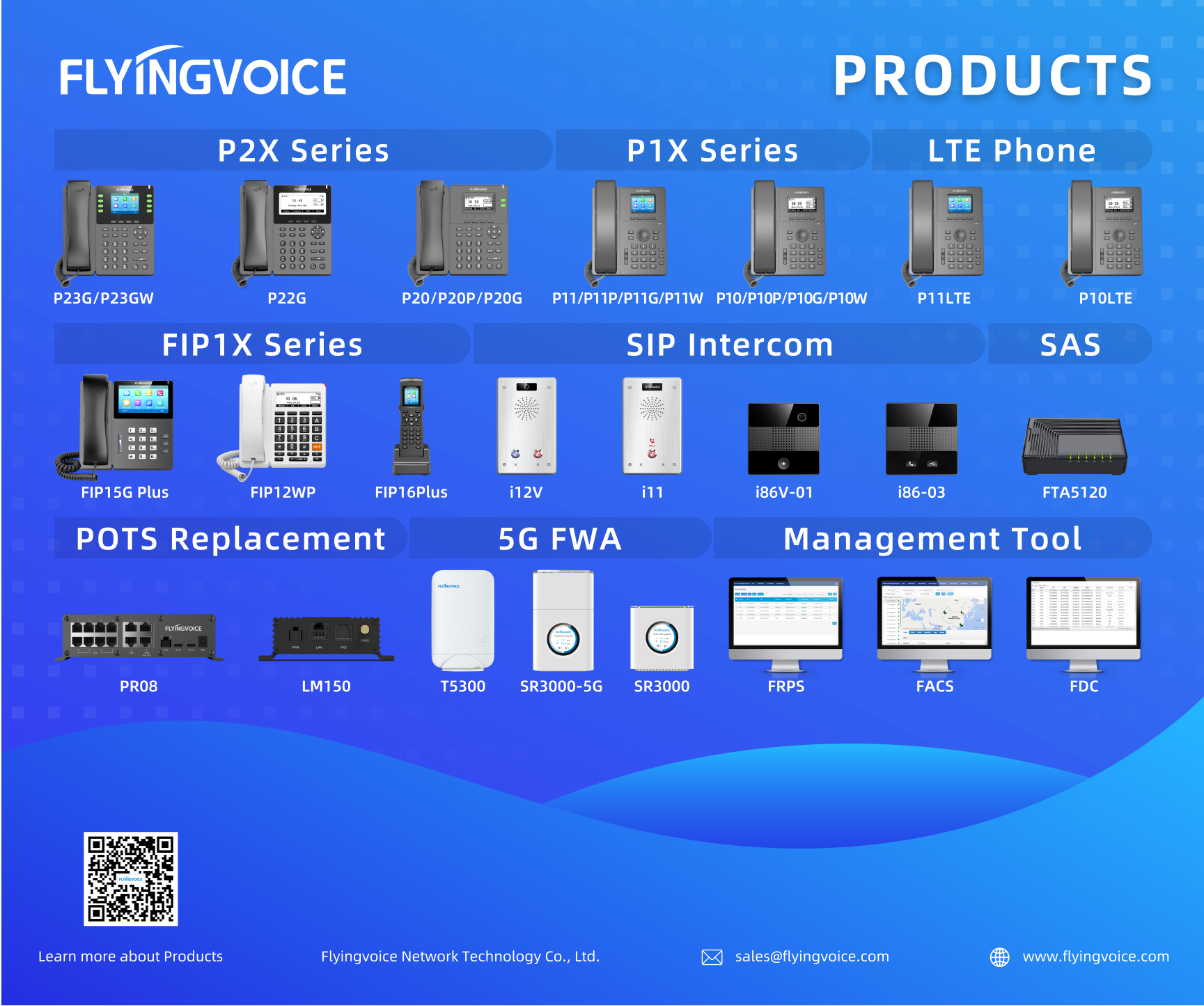POTS line has been around since the late 1800s, it is a very old technology and some applications are still run over on these services. Compared with POTS line, VoIP is definitely a better all-round solution for businesses in 2024. Today, we will explore the differences between VoIP and POTS, and you will know what is the right choice.
What is the PSTN/POTS?
The Public Switched Telephone Network (PSTN) is the traditional telephony network and it’s construction began in the late 1800s. People called it “the Plain Old Telephone Service (POTS)”, and the PSTN and POTS are synonymous, which analog voice transmission takes place through twisted copper wire pairs. The voice/sound signal will first be converted into electrical signal and then be transmit through PSTN. The PSTN uses underground copper wires to connect circuit-switching telephone networks around the world.

What is VoIP?
Simply defined, Voice-over Internet Protocol (VoIP) is a type of phone system that allows you to make telephone calls via the Internet, whereas POTS is a traditional, established telephone system that transmits communications via physical wires and cables. VoIP uses packet switching technology to transmit voice signals from one IP address to another over the public internet and/or private internet networks, the number of route from caller to the callee can be countless.

Flyingvoice P23G/P23GW:
Differences between VoIP and POTS

Advantages of VoIP over POTS
Since VoIP is a digital method of communication, it uses the internet to connect, while PSTN relies on landlines. In today's world, internet access is ubiquitous with broadband, Wi-Fi, and cellular wireless being more popular than dedicated lines. Additionally, IP phones or VoIP terminals are easy to manage and don't require on-site support during service outages.
Moreover, VoIP provides greater flexibility to extend or add new devices to a company's unified communication system. Because internet media can be wireless (e.g., Wi-Fi or cellular), you can place your terminals anywhere you need.
The most significant change is the cost difference between VoIP and POTS lines. VoIP is considerably cheaper than a traditional POTS line setup, with smaller setup fees, lower maintenance and hardware costs, and reduced call charges. In fact, switching to VoIP solutions can save customers up to 90% on their bills (data from https://findstack.com/resources/voip-statistics)

Switching to VoIP with Flyingvoice technology
Established in 2007, Flyingvoice is a global SME high-tech enterprise specializing in network communication terminal products. With research hubs strategically located in Bangkok, Hong Kong, and Shenzhen, and manufacturing facilities in Shenzhen and Vietnam, we ensure cutting-edge innovation and reliable production.
After more than 10 years of development, Flyingvoice has rich industry experience about VoIP and POTS solutions, we understand well for customers’ need for POTS replacement. We want to use our years’ experience to help you make the leap to VoIP smoothly and steadily, don’t wait until last minute, it is wisdom to take your action with Flyingvoice today!

Flyingvoice Products
If you want to know more product and the Flyingvoice all-in-one POTS Replacement Solution, please contact us or visit our website: flyingvoice.com.













 Back to list
Back to list









